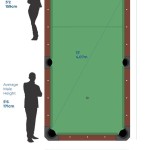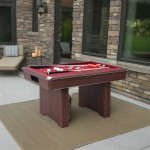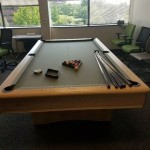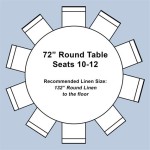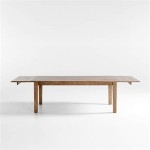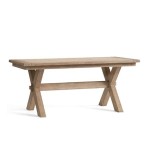Dining Table: A Fusion of Wooden Top and Metal Legs
The dining table stands as a central fixture in residential and commercial spaces, serving not only as a platform for meals but also as a focal point for social interaction and aesthetic expression. The combination of a wooden top with metal legs has emerged as a popular design choice, offering a blend of natural warmth and industrial strength. This article explores the various aspects of dining tables featuring wooden tops and metal legs, examining their advantages, design considerations, material options, and maintenance requirements.
Advantages of Wooden Top and Metal Leg Dining Tables
The appeal of dining tables with wooden tops and metal legs stems from a multitude of factors, primarily revolving around aesthetics, durability, and versatility. This design choice offers a balanced aesthetic that complements various interior design styles, from rustic farmhouse to modern minimalist.
One significant advantage is the inherent strength and stability provided by the metal legs. Metal, particularly steel or iron, offers exceptional load-bearing capacity and resistance to bending or warping. This ensures the table remains sturdy and reliable even under heavy use. The metal legs also contribute to the table's longevity, as they are less susceptible to damage from moisture, pests, or age compared to wood. Properly treated metal legs can withstand years of use without compromising their structural integrity.
The juxtaposition of wood and metal creates a visually appealing contrast. The warm, organic texture of the wooden top complements the sleek, industrial look of the metal legs. This combination can add visual interest and depth to a dining space, elevating the overall aesthetic. Furthermore, the inherent character of wood, with its unique grain patterns and natural variations, ensures that each table is a one-of-a-kind piece.
The versatility of this design allows it to seamlessly integrate into various interior design styles. In a rustic setting, a thick wooden top with a live edge paired with wrought iron legs can enhance the natural, organic feel. In a modern setting, a sleek, minimalist wooden top with powder-coated steel legs can complement the clean lines and geometric shapes. The adaptability of this design makes it a popular choice for homeowners and designers alike.
The material choices available allow for customization to fit a range of budgets and aesthetic preferences. Both wood and metal are available in a range of qualities and finishes, enabling the selection of materials that align with specific needs and design visions. This flexibility makes it possible to achieve a high-end look without necessarily incurring the highest costs.
Design Considerations for Wooden Top and Metal Leg Dining Tables
When selecting a dining table with a wooden top and metal legs, several design considerations must be addressed to ensure the table meets both functional and aesthetic requirements. These considerations include size and shape, wood type and finish, metal type and finish, leg design, and overall style.
The size and shape of the table should be determined based on the available space and the number of people it needs to accommodate. Rectangular tables are commonly used for larger groups, while round or square tables are suitable for smaller spaces. The table's dimensions should allow for comfortable seating and ample space for place settings and serving dishes. It is important to consider the room's overall proportions to ensure the table does not overwhelm the space or appear too small.
The choice of wood type significantly impacts the table's appearance, durability, and cost. Hardwoods like oak, maple, and walnut are known for their strength and resistance to wear and tear. Softwoods like pine and fir are more affordable but may be more susceptible to scratches and dents. The grain pattern and color of the wood should also be considered to ensure it complements the overall design of the dining space. The finish applied to the wood not only protects it from moisture and damage but also enhances its natural beauty. Options include stains, varnishes, lacquers, and oils, each offering a different level of protection and aesthetic appeal.
The metal used for the legs also influences the table's durability and aesthetic. Steel and iron are the most common choices, offering exceptional strength and stability. Aluminum is a lighter-weight option but may not be as durable. The finish applied to the metal legs can also vary, with options including powder coating, painting, and polishing. Powder coating provides a durable, scratch-resistant finish, while painting offers a wider range of color options. Polishing can enhance the metal's natural luster and create a sleek, modern look.
The leg design plays a crucial role in the table's overall style and stability. Simple, straight legs provide a clean, minimalist look, while more elaborate designs can add visual interest and character. The legs should be properly attached to the tabletop to ensure the table is stable and does not wobble. The thickness and placement of the legs also impact the table's stability and load-bearing capacity. Proper leg design is essential for ensuring the table remains functional and safe.
The overall style of the table should complement the existing décor of the dining space. A rustic table with a live-edge top and wrought iron legs would be well-suited for a farmhouse-style home, while a sleek, minimalist table with a lacquered top and powder-coated steel legs would be a better fit for a modern setting. Consider the color palette, textures, and overall aesthetic of the room when selecting a dining table to ensure a cohesive and harmonious design.
Material Options for Wooden Top and Metal Leg Dining Tables
The selection of materials for the wooden top and metal legs is paramount in determining the table's aesthetic, durability, and overall cost. Understanding the characteristics of different wood and metal types allows for informed decisions that align with specific needs and preferences.
For wooden tops, hardwoods such as oak, maple, and walnut are favored for their durability, strength, and attractive grain patterns. Oak is a versatile option known for its durability and resistance to wear. Maple is a lighter-colored wood with a fine, uniform grain pattern. Walnut is a premium hardwood prized for its rich, dark color and distinctive grain. Softwoods like pine and fir offer a more affordable alternative but may be more susceptible to scratches and dents. Reclaimed wood, sourced from old barns or buildings, offers a unique, rustic aesthetic and is an environmentally friendly option.
The finish applied to the wooden top not only protects it from moisture and damage but also enhances its natural beauty. Stains can be used to alter the wood's color, while varnishes and lacquers provide a durable, protective coating. Oils penetrate the wood, nourishing it from within and enhancing its natural grain. The choice of finish should be based on the desired aesthetic and the level of protection required.
For metal legs, steel and iron are the most common choices due to their strength and durability. Steel is a versatile material that can be easily shaped and finished. Iron offers a more traditional, rustic look. Aluminum is a lighter-weight option but may not be as durable as steel or iron. Stainless steel is a corrosion-resistant option that is suitable for outdoor use.
The finish applied to the metal legs can also vary, with options including powder coating, painting, and polishing. Powder coating provides a durable, scratch-resistant finish that is available in a wide range of colors. Painting offers a similar range of color options but may not be as durable as powder coating. Polishing can enhance the metal's natural luster and create a sleek, modern look. The choice of finish should be based on the desired aesthetic and the level of protection required.
Consider the environmental impact of the materials chosen. Opting for sustainably sourced wood and recycled metal can reduce the table's carbon footprint. Look for certifications like FSC (Forest Stewardship Council) to ensure the wood is sourced from well-managed forests. Choosing durable, long-lasting materials can also reduce the need for replacement, further minimizing environmental impact.
Maintenance and Care for Wooden Top and Metal Leg Dining Tables
Proper maintenance and care are essential for preserving the beauty and longevity of dining tables with wooden tops and metal legs. Regular cleaning, protection from damage, and occasional repairs can help maintain the table's appearance and structural integrity.
Regular cleaning is crucial for preventing the accumulation of dust, dirt, and spills. Wipe the wooden top with a soft, damp cloth after each use. Avoid using harsh chemicals or abrasive cleaners, as they can damage the finish. For metal legs, use a mild soap and water solution to remove dirt and grime. Dry both the wooden top and metal legs thoroughly after cleaning to prevent water damage.
Protect the wooden top from scratches, dents, and heat damage by using placemats, coasters, and trivets. Avoid placing hot dishes or sharp objects directly on the tabletop. Use furniture pads under decorative items to prevent scratches. Consider using a tablecloth for added protection, especially during meals with young children.
Address spills immediately to prevent staining or water damage. Blot spills with a clean, absorbent cloth. Avoid rubbing, as this can spread the spill and further damage the finish. For stubborn stains, use a mild stain remover specifically designed for wood. Test the stain remover in an inconspicuous area first to ensure it does not damage the finish.
Periodically inspect the table for loose screws or bolts. Tighten any loose hardware to ensure the table remains stable. If the metal legs are showing signs of rust, clean the affected area with a wire brush and apply a rust-resistant primer and paint. If the wooden top is scratched or damaged, consider refinishing it to restore its beauty.
Consider the environment in which the table is placed. Excessive humidity or dryness can damage the wood. Use a humidifier or dehumidifier to maintain a stable indoor environment. Avoid placing the table in direct sunlight, as this can cause the wood to fade or warp. Protect the table from extreme temperature fluctuations, as this can also damage the wood.

Industrial Modern Dining Table What We Make

Industrial Modern Dining Table What We Make

Contemporary Walnut Dining Table Steel Legs Metal Base Coffee

Industrial Dining Table With Wooden Top Black Metal Legs Foster Furniture123

Reclaimed Wood Top Dining Table With Metal Legs Kirklands Home

Industrial Modern Dining Table What We Make

Welwick Designs 60 In Rectangle Rustic Oak Wood Top Modern Dining Table With Metal Legs Seats 6 Hd9397 The Home Depot

Sullivans V Pattern Wood Top Rectangle Table With Metal Legs 71 X 35 75 30 In Tbl163 The Home Depot

Rustic Industrial Dining Table Metal Legs Chunky Wooden Style Quirky Kitchen Desk Counter

Welwick Designs 60 In Rectangle Rustic Oak Wood Top Modern Dining Table With Metal Legs Seats 6 Hd9397 The Home Depot
Related Posts

